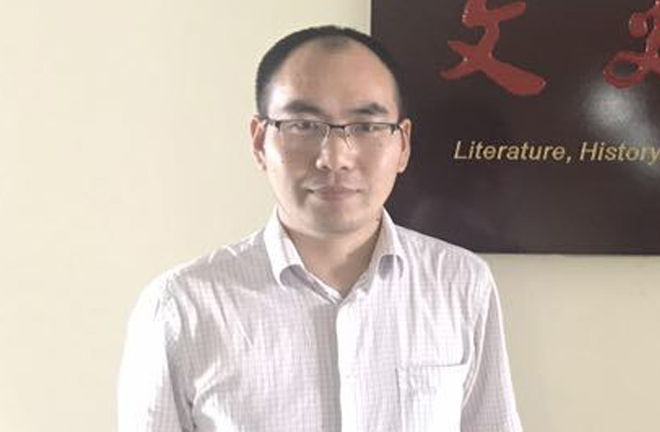HAN SHUNFA: Digital creative industry conducive to a better life
 The digital creative industry is a new form of cultural industry jointly underpinned by technological elements and commercial logic. Representative of the cultural industry’s latest development trends, it has considerable growth prospects and economic potential. Covering sectors including digital games, interactive entertainment, film and animation, stereo imaging, online education, digital archiving, creative design, and virtual reality, the industry has become an important provider of popular cultural products. With people’s daily lifestyles today increasingly characterized by digitization, it can be seen how the industry concerns people’s quality of life.
The digital creative industry is a new form of cultural industry jointly underpinned by technological elements and commercial logic. Representative of the cultural industry’s latest development trends, it has considerable growth prospects and economic potential. Covering sectors including digital games, interactive entertainment, film and animation, stereo imaging, online education, digital archiving, creative design, and virtual reality, the industry has become an important provider of popular cultural products. With people’s daily lifestyles today increasingly characterized by digitization, it can be seen how the industry concerns people’s quality of life.
The digital creative industry is economic, but more so cultural. Lurking behind it are cultural forms of creation, production, communication, duplication, circulation, consumption and more, sometimes in combination. A culture of a certain time period bears the distinctive marks exclusive to its particular era, and the differences in modes of production often are what determine the differences among cultures of different times. Now that digitization and informatization have become the most notable modes of production and lifestyle, digital culture is probably the mainstream culture of today’s era.
The digitization that plays a leading role in the digital creative industry is a complex entity that has been formed through the integration of a variety of mainstream factors of social development, such as art, culture, technology, capital and market. With digital and internet technology as an impetus, the digital creative industry has gained enough popularity among the masses to procure a fundamental foothold. This allows the industry’s cultural content and artistic forms to extend beyond the confines of carrier and space, rendering a more convenient mode of production and a broader means of transmission. The ideal is now technically possible: anyone can now access all of humanity’s cultural achievements and participate in cultural expression anytime and anywhere. This exactly reflects the “core value of humanism” advocated by the internet.
The digital creative industry has drawn a picture in which everyone is engaged in social life, in contrast to the basic stance held by F. R. Leavis that culture should be in the hands of a select few. However, the challenges that come with it are how to make aesthetics accessible to the public, so that the public accepts the way that creators convey their meanings and so there can be an emotional exchange between the creators and the public in the end. At last, history has found a way of “integrating aesthetics into daily life,” which means to transfer the aesthetic manner into life and into the everyday scenes and cognitive states of the masses.
From the poetry in the Tang Dynasty to Ci (a type of lyric poetry, the rhythmic pattern of which is based upon certain musical song tunes) in the Song Dynasty, and from the Vernacular Chinese Language Movement to modern and contemporary literature, the history of literature and art development in China exhibits this trend of aesthetics becoming part of life. Today, the digital creative industry is a radical manifestation of this trend. Film and television, online video, popular music and online animation, involving an extensive audience, all convey ideas in artistic forms that are close to common life. Online gaming creates virtual spaces for players to indulge in. While it greatly enhances interactivity and participation, online gaming allows leisure, entertainment and aesthetic activities to deeply infiltrate people’s real lives. A kind of computer simulation system that creates virtual worlds for people to experience, virtual reality technology provides an environment where participants can no longer differentiate the real and the virtual.
In this sense, the increasing integration of aesthetics into daily life promoted by the digital creative industry is an important way in which art and life may be reconciled, and it is a force for the betterment of human life.
Han Shunfa is an associate professor from the School of Social Development at Nanjing Normal University.
(edited by BAI LE)
